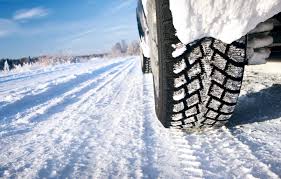When Should I Switch to Winter Tires?

In Nova Scotia winters, car accidents are often caused by slippery road conditions. Some drivers fail to appreciate the need to drive slower and some are late to install their winter tires. As experienced Nova Scotia injury lawyers, we’ve heard many stories of drivers waking up on the morning of an early snowfall and needing to drive to work with their summer tires. This of course increases the risk of car accidents and injuries.
Some drivers wait to install their winter tires out of procrastination. Others wait because of the well-known fact that the longer they drive on winter tires on warm roads, the faster they’ll wear out (and tires are expensive). Regardless of the reason, it is important to know that waiting too long puts you, and others on the road, at risk of injury. It is important not to wait until the first snow fall or the first patch of ice before switching over to winter tires.
Winter Tires Prevent Car Accidents and Injuries:
Studies have shown that winter tires improve handling, braking and acceleration in winter driving conditions, such as on icy, cold, snowy and slushy surfaces. The Traffic Injury Research Foundation recently completed a study of research on winter tire effectiveness. Based on all available information, the study concluded that winter tires outperform all other types of tires under winter driving conditions, including all-season tires and summer tires.
Best Practices for Winter Tire Installation:
The question many Nova Scotians have then is: “when should I install my winter tires”?
As a general rule, the Tire and Rubber Association of Canada recommends that drivers switch to winter tires As soon as the temperature dips below 7°C in order to benefit from the increased traction, braking and handling they provide.
It is further recommended that you should install good winter snow and ice tires on all 4 wheels. So-called “all-weather” tires are a bit of a misnomer; they are generally not ideal for severe winter conditions in Nova Scotia.
While it can provide tempting cost savings, it’s generally unsafe to install snow tires on only your drive wheels (i.e. the front wheels on a front wheel drive vehicle or the rear wheels on a rear wheel drive vehicle). This is particularly dangerous and could result in a complete loss of control. Installing two winter tires on the front or rear axles increase the grip on only half your tires and can lead to a false sense of security causing oversteer or understeering. Be sure to install snow tires on all four wheels, and make sure your tires have adequate tread.
Following the general guidelines for winter tires can help keep you and your family safe on the roads this coming winter!






















